The global retail industry is characterized by its complexity, unpredictability, and volatility. Companies such as Tesco operate in a dynamic environment where they must manage many external factors that can significantly impact their performance.
These factors range from political and economic shifts to technological advancements and changing consumer behaviors. Understanding the external environment is crucial for strategic planning and sustainable growth in such a challenging environment.
The PESTEL analysis model, which examines political, economic, social, technological, environmental, and legal influences, provides a comprehensive framework for assessing these external factors.
By applying the PESTEL model to Tesco, we can gain valuable insights into the various elements that shape its business operations and strategic decisions.
Tesco Overview
History
Tesco was founded in 1919 by Jack Cohen in London, England, originally as a group of small grocery stores. Over the years, Tesco grew into a supermarket giant, expanding throughout the UK and internationally.
In 1997, Tesco acquired Cathers Brothers, a major grocery chain, solidifying its position as the UK’s largest supermarket chain.
Key Metrics and Statistics
Tesco is one of the world’s largest grocery retailers, with stores in several countries. It currently has stores in five countries: the United Kingdom, Ireland, the Czech Republic, Hungary, and Slovakia.
In the past, Tesco had operations in many other countries, but it has since exited those markets. As of 2021, it employed over 300,000 people worldwide, and its revenue in 2022 was around £54 billion.
Activities
Tesco operates various stores, including supermarkets, hypermarkets, convenience stores, and petrol filling stations. It also offers various online services, including grocery home delivery and click-and-collect.
Achievements
Tesco was a pioneer in introducing barcode technology in supermarkets. It has been credited with revolutionizing the grocery shopping experience in the UK by offering lower prices and a wider variety of products.
Main Competitors
Tesco’s main competitors in the UK include Sainsbury’s, Asda, Morrisons, and Lidl. Internationally, Tesco competes with other major grocery retailers such as Walmart, Kroger, and Carrefour.
Suppliers
Tesco has a vast network of suppliers that provide it with a wide range of grocery and general merchandise products. Tesco works closely with its suppliers to ensure that it can offer its customers competitive prices and high-quality products.
Customers
Tesco’s customer base is extensive and includes people from all walks of life. To cater to the needs of its diverse customer base, Tesco offers a variety of products and services.
Strategy
Tesco’s strategy is focused on providing its customers with low prices, a wide variety of products, and convenient shopping experiences. In recent years, Tesco has also been focusing on growing its online business and expanding its international presence.

Pestel analysis of Tesco
We now turn to the results of Tesco’s PESTEL analysis:
Political factors
According to our investigation, here’s how the political context presents both opportunities and challenges for Tesco in the UK market:
Opportunities:
Focus on domestic food production:
The UK government’s emphasis on food security and supporting British farmers could benefit Tesco. By partnering with local suppliers, Tesco can meet customer demand for ethically sourced and sustainable products, potentially boosting sales.
In June 2024, Tesco announced a partnership with a British fruit and vegetable cooperative to source more local produce. This aligns with the government’s focus on domestic food production.
Minimum wage increase:
The recent increase in the UK minimum wage could lead to higher disposable income for consumers. Tesco can position itself as a value leader, offering budget-friendly options to attract this segment.
For example, in June 2024, the National Living Wage (for over 25s) rose to £9.50 per hour, potentially putting more money in shoppers’ pockets.
Government investment in online infrastructure:
Investments in broadband and rural connectivity could benefit Tesco’s online grocery business. Easier internet access in underserved areas could open new markets for online grocery deliveries and click-and-collect services.
Tesco has been trialing click-and-collect grocery lockers in rural areas to improve access to online shopping options, potentially benefiting from government investment in online infrastructure.
War on plastic:
The UK government’s push to reduce plastic waste could present an opportunity for Tesco to develop and offer more sustainable packaging solutions.
This could attract environmentally conscious customers and improve brand image.
Tax breaks for online grocery fulfillment centers:
The government could offer tax breaks for building online fulfillment centers, which could incentivize Tesco to expand its online operations and compete more effectively with rivals like Amazon.
Threats:
Increased Regulation:
The government’s focus on online safety and data privacy could lead to stricter regulations for online grocery shopping, potentially increasing Tesco’s operational costs and impacting customer experience.
In 2023, the UK government implemented the Online Safety Bill, which could require platforms like Tesco’s online grocery store to take stricter measures to prevent harmful content and protect user data. This could involve additional investment in content moderation and data security.
Potential Changes to Business Rates:
A review of business rates (property taxes) in the UK could lead to higher costs for Tesco, especially for its larger stores. This could squeeze profit margins and force Tesco to raise prices or close stores.
Competition from discount retailers:
Government policies that support budget retailers, such as reducing planning restrictions for new discount stores, will likely increase competition for Tesco’s main customer base. Lidl and Aldi, for instance, have been rapidly expanding in the UK.
Sugar tax expansion:
The government might expand the existing sugar tax on soft drinks to include other unhealthy products. This could force Tesco to reformulate its own-brand products or raise prices, potentially impacting sales.
Changes to agricultural subsidies:
Changes to government subsidies for farmers could raise food prices, impacting Tesco’s ability to offer competitive prices and potentially leading to customer dissatisfaction.
Economic factors
Opportunities:
Shift towards online grocery shopping:
The UK online grocery market is booming. With busy lifestyles and rising fuel costs, consumers are increasingly opting for online grocery deliveries and click-and-collect options.
Tesco can capitalize on this trend by investing in its online grocery platform and delivery infrastructure.
Growth of convenience shopping:
Convenience stores are experiencing significant growth in the UK. Tesco can cater to this by expanding its network of smaller format stores like Tesco Express, offering quick and convenient shopping experiences.
Tesco recently announced a partnership with a delivery startup to expand its one-hour grocery delivery service. This taps into the growing demand for convenience and online grocery shopping.
Demand for value offerings:
The current economic squeeze is leading to increased demand for value-for-money products. Tesco can leverage its buying power to negotiate better deals with suppliers and offer customers competitive prices on essential items.
Kantar data for April 2024 shows grocery price inflation in the UK at a record high of 9.8%. This highlights the growing pressure on household budgets.
In response, Tesco launched its “Everyday Value” range in 2023, offering budget-friendly alternatives to popular branded products. This strategy aligns well with the current economic climate.
Growth of the premium food market:
Despite the economic pressures, the demand for premium food items like organic produce and locally sourced products remains strong. Tesco can cater to this by expanding its premium own-brand offerings and partnering with local suppliers.
Subscription box model:
Subscription box services for groceries and meal kits are gaining popularity. Tesco could explore this model, offering customers convenience and potentially higher margins.
Tesco has also been piloting a subscription box service for healthy meal kits, potentially capitalizing on the trend towards convenient and healthy meal solutions.
Threats:
Rising inflation:
The current high inflation rate in the UK is putting pressure on household budgets. Consumers may cut back on discretionary spending, impacting Tesco’s sales of non-essential items.
As mentioned earlier, Kantar data shows grocery price inflation at 9.8% (April 2024), highlighting the squeeze on consumer spending.
Supply chain disruptions:
Global supply chain disruptions due to factors like the war in Ukraine and port congestion could lead to product shortages and higher import costs for Tesco. This could disrupt product availability and further increase prices.
Labor shortages:
The UK faces a labor shortage, particularly in the retail sector. This could lead to staff shortages at Tesco stores, impacting customer service and potentially increasing operating costs.
Recent reports suggest a vacancy rate of over 8% in retail (April 2024).
Economic recession:
A potential economic recession in the UK could lead to a decline in consumer spending and a rise in unemployment. This could significantly impact Tesco’s sales and profitability.
Increase in interest rates:
The Bank of England might raise interest rates to combat inflation. This could make borrowing more expensive for consumers and businesses, potentially impacting Tesco’s ability to invest in new stores and online infrastructure.
Social factors
Opportunities:
Growing demand for convenience:
Consumers are increasingly busy and time-pressed. Tesco can capitalize on this by offering convenient shopping options like extended store hours, click-and-collect services, and rapid home deliveries.
Rise of ethnic cuisine:
The UK’s diverse population is driving demand for ethnic food products. Tesco can expand its range of ethnic food to meet the needs of this growing segment and attract new customers.
Focus on local sourcing:
Consumers are showing interest in locally sourced and seasonal produce. Tesco can partner with local farmers and suppliers to offer fresh, high-quality products while supporting the local economy.
Tesco has been expanding its “Farmyard” range, which features products sourced from British farms. This strategy aligns well with the increasing consumer interest in local sourcing.
Growth of plant-based eating:
The popularity of plant-based diets is on the rise. Tesco can expand its vegan and vegetarian product range to cater to this growing market segment.
Also, Tesco has been expanding its “Plant-Based” range, offering vegan and vegetarian alternatives to popular meat products, catering to the growing demand for plant-based options.
Community engagement:
Consumers are looking for retailers that are involved in their communities. Tesco can sponsor local events, support charities, and partner with local businesses to build stronger community ties and brand loyalty.
Threats:
Shifting consumer values:
Consumers are increasingly concerned about ethical sourcing, sustainability, and environmental impact. Tesco is under pressure to ensure that its products are ethically sourced and its operations are environmentally sustainable.
Rise of discount grocers:
The growing popularity of discount grocers like Aldi and Lidl, known for their lower prices and limited product ranges, puts pressure on Tesco to maintain its value proposition for budget-conscious shoppers.
Increased focus on health and wellness:
Consumers are more focused on healthy eating and buying fresh produce. Tesco must adjust its product offerings to meet the growing demand while also ensuring convenience and affordability.
Consumer backlash over plastic usage:
Public pressure to reduce plastic waste could lead to a decline in sales of pre-packaged groceries. Tesco needs to find ways to offer sustainable packaging options.
Growth of online marketplaces:
The rise of online marketplaces like Amazon, which offer a wider variety of products and potentially lower prices, could threaten Tesco’s market share.
Technological factors
Opportunities:
The UK retail landscape is constantly evolving with new technologies. Here’s a breakdown of the opportunities Tesco can leverage:
E-commerce growth:
The online grocery market in the UK is booming. Tesco can capitalize on this by:
- Enhancing its online grocery platform: Offering a user-friendly interface, personalized recommendations, and efficient delivery options can attract more online shoppers.
- Optimizing its click-and-collect services: Streamlining the click-and-collect process for faster in-store pickup can be a major advantage.
- Data analytics: Tesco can leverage customer data to personalize shopping experiences, improve product recommendations, and optimize inventory management.
Automation and robotics:
Tesco can invest in automation technologies for warehouse operations and potentially in-store tasks like shelf stocking, improving efficiency and reducing costs.
Augmented reality (AR) and virtual reality (VR):
Tesco could explore AR/VR applications to enhance the customer experience. For example, AR apps allow customers to visualize furniture or appliances in their homes before purchasing virtually.
Artificial intelligence (AI)-powered chatbots:
AI chatbots can provide 24/7 customer service support and answer product-related queries, improving customer experience and reducing call center costs.
Threats:
Cybersecurity threats:
Data breaches and cyberattacks are a major concern for all retailers. A security breach at Tesco could damage customer trust and reputation, leading to financial losses.
Disruptive technologies:
New technologies like autonomous delivery vehicles or drone deliveries could emerge and disrupt Tesco’s existing delivery models.
Competition from online giants:
Major online retailers like Amazon and technology companies entering the grocery space could pose a significant threat to Tesco’s market share, particularly in online grocery sales.
Amazon has been expanding its grocery delivery service in the UK, posing a direct threat to Tesco’s online grocery market share.
High cost of adopting new technologies:
The initial investment required to implement cutting-edge technologies like AI and automation could be significant for Tesco.
Lack of skilled workforce:
The adoption of new technologies might require a skilled workforce to manage and maintain them. Tesco needs to ensure it has a talent pool to support technological advancements.
Ethical concerns around data collection:
As Tesco collects more customer data, it needs to tread carefully to avoid privacy concerns and ensure responsible data management practices.
Environmenal factors
Opportunities:
Meeting consumer demand for sustainable products:
Consumers are increasingly concerned about the environmental impact of the products they buy.
Tesco can capitalize on this by offering eco-friendly product lines. This could include products with sustainable packaging, organic options, or certifications like Fairtrade.
Additionally, partnering with sustainable suppliers by sourcing products from companies with strong environmental practices can enhance Tesco’s sustainability credentials.
Reducing waste:
Waste reduction is a major focus in the retail sector. Tesco can minimize packaging waste by investing in reusable packaging options or offering packaging-free alternatives, which can attract environmentally conscious customers.
Additionally, Tesco can improve food waste management by implementing strategies to reduce food waste in stores and throughout the supply chain, thereby lessening its environmental footprint.
According to WRAP (Waste & Resources Action Programme), UK households waste around 7.1 million tonnes of food per year. Tesco’s efforts to reduce food waste can benefit the environment and potentially improve profitability.
Carbon-neutral operations:
Investing in renewable energy sources and carbon offsetting initiatives can help Tesco achieve carbon neutrality and improve its environmental image.
Sustainable logistics:
Optimizing delivery routes and exploring greener transportation options can reduce Tesco’s carbon footprint associated with deliveries.
Threats:
Tesco faces significant challenges within the ecological environment. Here’s a breakdown of the threats that Tesco needs to address:
Stricter government regulations:
The UK government is expected to introduce stricter regulations on plastic packaging and carbon emissions. This could force Tesco to redesign packaging and potentially increase costs if sustainable alternatives are more expensive.
Consumer backlash over plastic use:
Public pressure to reduce plastic waste remains high. Tesco faces potential customer boycotts or negative publicity if it doesn’t make significant progress in reducing plastic packaging.
In 2023, the UK government introduced a plastic bag levy, which has significantly reduced the number of single-use plastic bags. This highlights the potential for stricter regulations on other types of plastic packaging.
Scrutiny of supply chains:
Consumers are increasingly concerned about the environmental impact of Tesco’s supply chains, including deforestation, water usage, and ethical sourcing practices. If these issues are not addressed, Tesco could face reputational damage.
Carbon tax:
The UK government might introduce a carbon tax on businesses with high carbon footprints. This could increase Tesco’s operational costs and lead to price hikes for consumers.
Extreme weather events:
Climate change could lead to more frequent disruptions in Tesco’s supply chains due to extreme weather events impacting harvests or transportation.
Legal factors
In the UK retail sector, Tesco faces both challenges and opportunities within the legal landscape. Let’s take a closer look at the situation:
Opportunities:
Clarity on post-Brexit trade deals:
The finalization of post-Brexit trade deals could potentially benefit Tesco by reducing import costs. Favorable trade deals with key suppliers could lead to lower import costs for certain products, improving Tesco’s profit margins.
Additionally, expanding export opportunities could allow Tesco to export its own-brand products to new markets.
For instance, the UK government is currently negotiating a trade deal with India, which could benefit Tesco by lowering import costs for certain food products like tea and spices.
Fair competition regulations:
The UK government is reviewing competition laws. Stronger enforcement of fair competition rules could benefit Tesco by curbing the dominance of discount grocers.
Stricter regulations could prevent discount grocers from engaging in predatory pricing practices, creating a more level playing field for Tesco.
Additionally, stronger competition laws could ensure fair treatment from suppliers, protecting Tesco from unfair practices such as excessive price hikes.
Relaxation of Sunday trading restrictions:
The UK government might consider relaxing Sunday trading restrictions, allowing Tesco to extend its opening hours on Sundays. This could increase sales, particularly for convenience shopping.
Legal clarity on online grocery deliveries:
Clearer regulations on online grocery deliveries, such as parking restrictions for delivery vehicles, could benefit Tesco by streamlining delivery operations and reducing costs.
Threats:
The legal environment presents significant challenges for Tesco. Here’s a breakdown of the legal threats Tesco needs to address:
Increased regulation on online sales:
The UK government might introduce stricter regulations on online sales, including online safety bills. These bills could require Tesco to implement stricter content moderation measures for its online grocery platform, potentially increasing operational costs.
Additionally, new regulations on delivery driver rights could grant delivery drivers more rights and benefits, increasing Tesco’s labor costs.
Potential changes to employment law:
Changes to employment law, such as an increase in the minimum wage or stricter working hour regulations, could increase Tesco’s labor costs.
The National Living Wage in the UK increased in June 2024, potentially impacting Tesco’s labor costs.
Evolving consumer rights:
The UK government might expand consumer rights related to online shopping. This could lead to more customer complaints and potentially higher returns or refunds for Tesco.
Increased litigation:
Tesco could face more lawsuits from customers or employees, leading to legal fees and potential settlements. Changes to data privacy laws could make it more challenging for Tesco to collect and utilize customer data for marketing purposes.
Additionally, the expansion of the sugar tax by the government might include other unhealthy products, impacting Tesco’s sales of certain food items.
Conclusion
The PESTEL analysis of Tesco in the UK highlights the dynamic and challenging macro environment of the retail industry. Despite these complexities, there are both opportunities and threats.
Here are some strategic ways for Tesco to navigate this environment:
Tesco can seize opportunities by embracing technology through investing in a robust online grocery platform, leveraging data analytics for personalized marketing and efficient inventory management, and exploring automation for improved efficiency.
Partnering with tech companies can help Tesco stay ahead of the curve. Focusing on convenience, Tesco can expand click-and-collect services, offer rapid delivery options, and consider extended store hours to cater to busy lifestyles.
Championing sustainability by offering eco-friendly packaging options, partnering with sustainable suppliers, investing in renewable energy, and prioritizing food waste reduction can build trust with environmentally conscious consumers through transparency in these efforts.
Additionally, catering to evolving consumer preferences by expanding ethnic food aisles, offering a wider range of healthy and plant-based options, and sourcing products locally whenever possible can further enhance Tesco’s market position.
To counter threats, Tesco needs to mitigate rising costs by negotiating better deals with suppliers, optimizing supply chains, and investing in cost-saving technologies.
It is essential to ensure data security by implementing robust cybersecurity measures, prioritizing data privacy, and clearly communicating data collection practices to customers.
Adapting to changing regulations by monitoring legal developments, advocating for fair competition policies, and ensuring compliance with all regulations can help Tesco avoid penalties and reputational damage.
Maintaining a competitive edge by focusing on private-label product development, offering value-driven options, and continuously improving customer service can differentiate Tesco from discount grocers.
Overall, Tesco needs to be agile and data-driven. By proactively embracing new technologies, prioritizing sustainability, and catering to evolving consumer demands, Tesco can secure its position as a leading UK retailer.
Investing in cost-saving measures, robust legal compliance, and strong cybersecurity practices will be crucial to navigate the ever-changing economic and political landscape.
Read also: SWOT analysis of Tesco in 2024.
PESTEL analysis examples 2024
To better understand the PESTEL analysis, we invite you to read our recent free examples of the Pestel framework.
PESTEL analysis of Lululemon
Click here to read our example of Lululemon PESTEL analysis.
PESTEL analysis of China
Click here to read our example of China PESTEL analysis.
PESTEL analysis of Coca-cola
Click here to read our example of Coca-cola PESTEL analysis.
PESTEL analysis of British Airways
Click here to read our example of British Airways PESTEL analysis.
PESTEL analysis of Primark
Click here to read our example of Primark’s PESTEL analysis.
PESTEL analysis of Zara
Click here to read our example of Zara’s PESTEL analysis.
PESTEL analysis of DHL
Click here to read our example of DHL’s PESTEL analysis.
PESTEL analysis of FedEx
Click here to read our example of FedEx’s PESTEL analysis.
PESTEL analysis of Chipotle
Click here to read our example of Chipotle’s PESTEL analysis.
PESTEL analysis of Brazil
Click here to read our example of Pestel’s analysis of Brazil.
PESTEL analysis of Spotify
Click here to read our example of Spotify Pestel analysis.
Chick-fil-A PESTEL Analysis
Click here to read our example of Chick-fil-A Pestel analysis.
Costco PESTEL Analysis
Click here to read our example of Costco Pestel analysis.
Microsoft PESTEL Analysis
Click here to read our example of Microsoft Pestel analysis.
Disney PESTEL Analysis
Click here to read our example of Disney Pestel analysis.
Airline Industry PESTEL Analysis
Click here to read our example of the Airline industry Pestel analysis.
Walmart Pestel Analysis
Click here to read our example of Walmart Pestel analysis.
Amazon Pestel Analysis
Click here to read our example of Amazon Pestel analysis.
McDonald’s Pestel Analysis
Click here to read our example of the Netflix Pestel analysis.
Netflix Pestel Analysis
Click here to read our example of the Netflix Pestel analysis.
Apple Pestel Analysis
Click here to read our example of the Apple Pestel analysis.
Twitter Pestel Analysis
Click here to read our example of the Twitter Pestel analysis.
Facebook Pestel Analysis
Click here to read our example of the Facebook Pestel analysis.
Pestel analysis of the Social Media industry
Click here to read our example of the Pestel analysis of the Social Media industry.
Ikea Pestel Analysis
Click here to read our example of the IKEA Pestel analysis.
Tesla Pestel Analysis
Click here to read our example of the TESLA Pestel analysis.

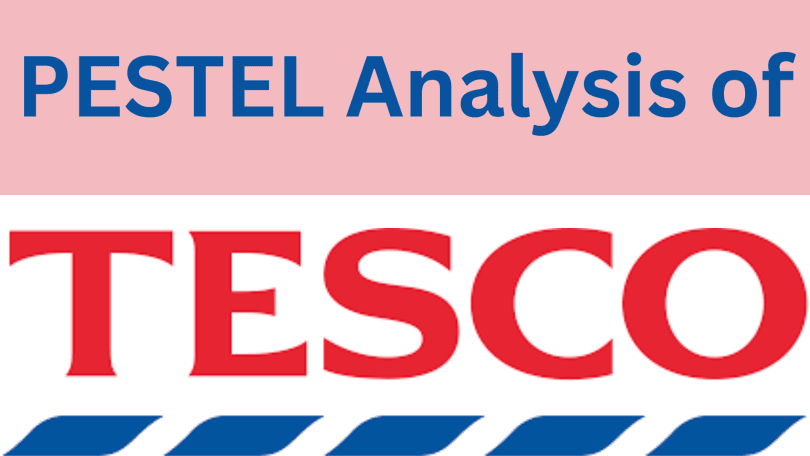

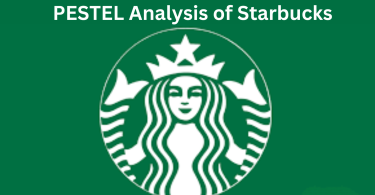
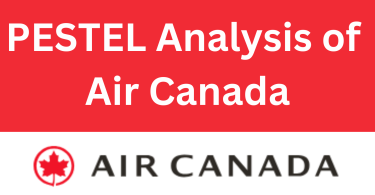
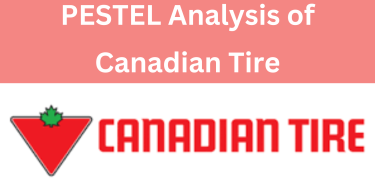
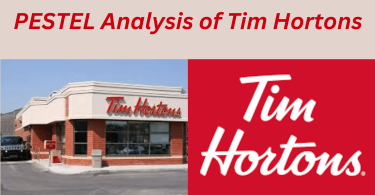


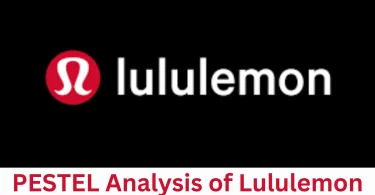
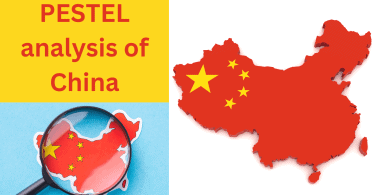
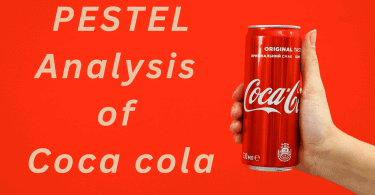
Leave a Comment